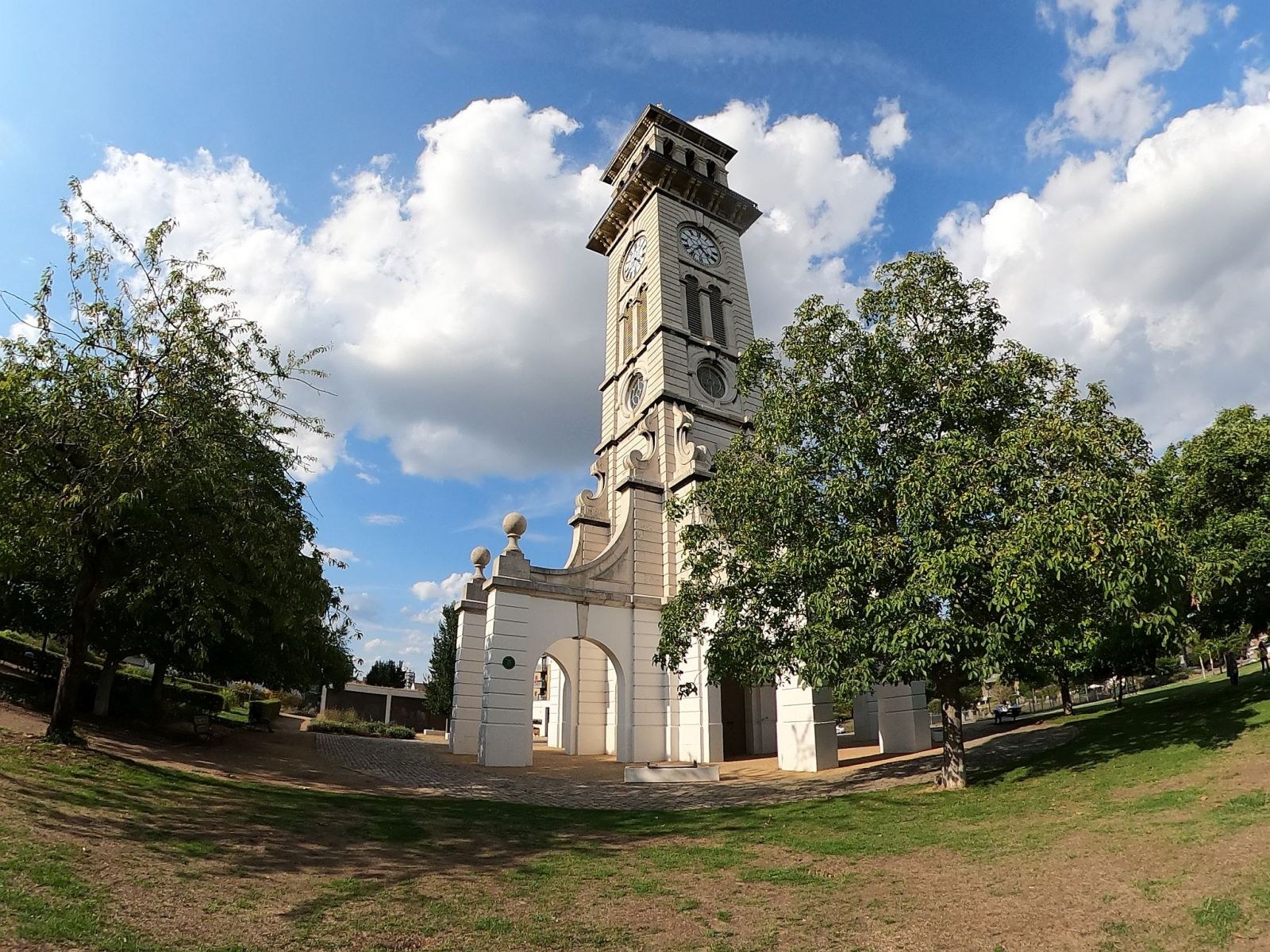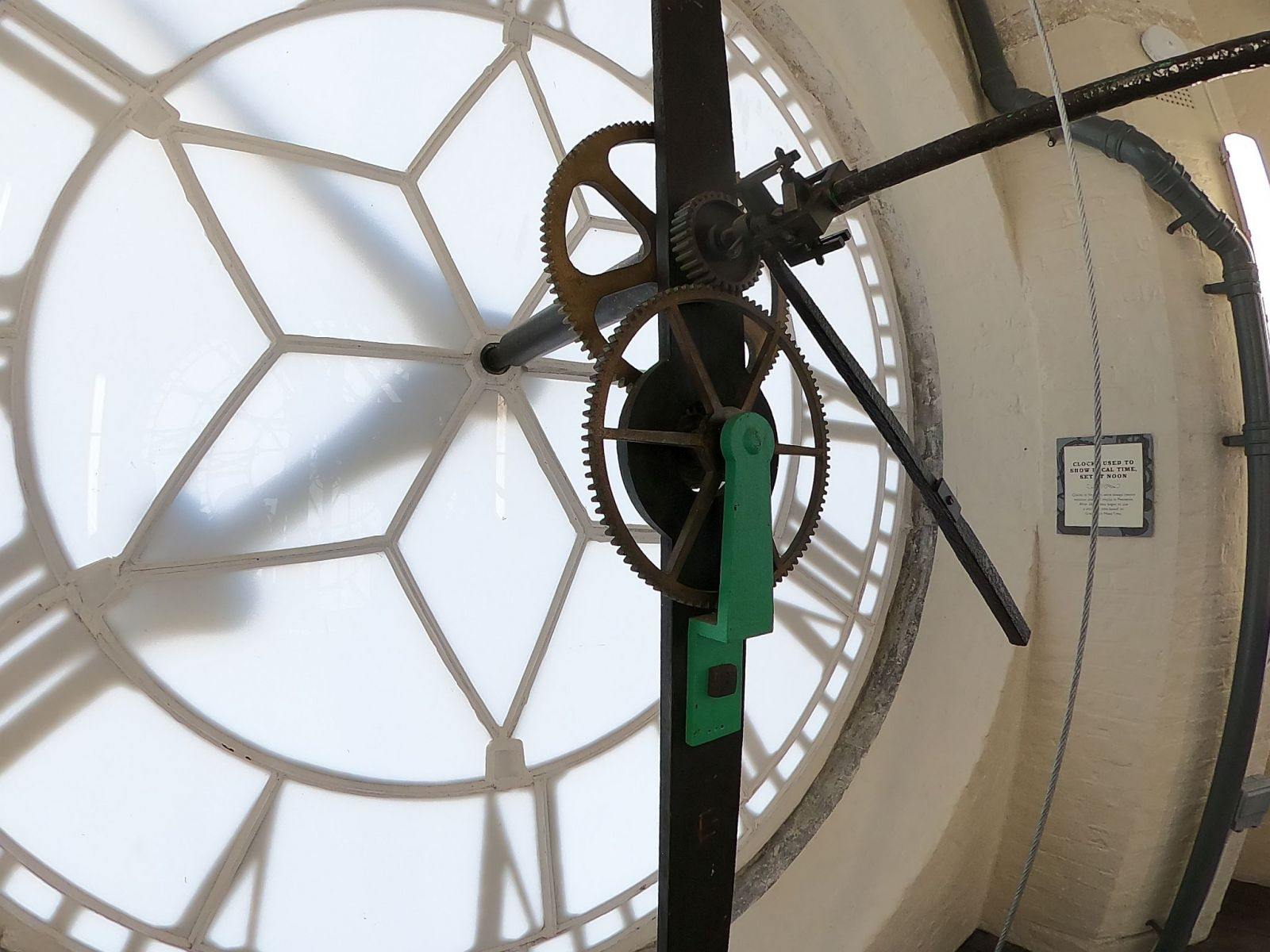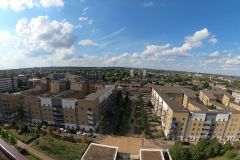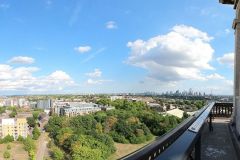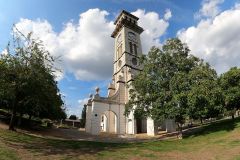Caledonian Park Clock Tower
Today, Smithfield meat market in the City of London is a quietly efficient meat market in the heart of the City but, until the mid-1800s, it also handled live animals. Live animals making lots of noise and smelly stuff whilst they were waiting to be sold and slaughtered when then there would be more noise and gore.
With the City becoming increasingly crowded, a live animal market in its midst was, if nothing else, unhygienic. In 1852, an Act of Parliament was passed to move the live animal market to a new location to the North in the then green fields of Islington. It was a huge location of which Caledonian Park is today only a small part of.
In the days before the railways were setup to carry animals in dedicated wagons, they would be walked to market from across the country, the animals walking distances so great that they were lean and fit by the time they arrived at the market. Lean and fit meant the animals had lost weight, which meant the owners got less for the animals at auction, so a large part of the Caledonian Market site was given over to fattening up the animals.
The quantities of trade being done meant there was a lot of administration which was headed by the Superintendent of the market. Before the advent of personal watches, public clocks were to be found in important locations, and so it was that Caledonian Market had a clock tower at it’s centre, on the third floor of which the Superintendent had his office.
Today, the clock tower is the most significant remaining part of Caledonian Market, which, having fallen into dereliction, was restored in 2018 with the aid of a National Lottery Grant.
Visiting
The Clerkenwell and Islington Tour Guide Association now welcome small groups of visitors to the tower and guide them to the viewing balcony at the top, just below where the bells are hung. It is not your average tour, featuring some pretty steep ladders that take visitors to giddying heights.
To book a tour, go to the Eventbrite website and search for “Tour of the Clock Tower in Caledonian Park” by “Islington Council”.
Safety
You can only take up the tower what you can carry in your pockets, leaving your hands free for the ladders. With the ladders being so steep, having bags and cameras swinging around would not improve safety so, for this reason, all the pictures in this post were taken using a GoPro 360 Max rather than on the more usual SLR.
Everyone has to demonstrate they can safely climb the first few steps of the first straight ladder which felt like a bit of unnecessary pantomime until you saw how steep and long some of the ladders are. Only one person was allowed on each ladder at a time which made for slow progress between floors for the group, but was an absolutely essential safety measure. Visitors were reminded not to stand at the foot of the ladders until it was their turn to climb just in case a visitor before them came back down under the influence of gravity and they ended up acting as a cushion.
The Superintendent’s Office
From here the Superintendent watched over his responsibilities with little escaping his eye.
The Clock Mechanism
The Four Faces Of The Turret Clock
A rod emerges from the floor, linked to the clock’s mechanism on the floor below. The rod, rotated by the mechanism below, enters a four way mechanism that delivers the clock’s movement to the hour and minute hands on each of the four clock face. Each of the clock’s hands has a counterbalance weight on the inside of the clock face.
The Viewing Balcony
Having made it to the top, visitors are rewarded with clear, unobstructed views of London across all points of the compass.
South: The towers of Canary Wharf can be seen to the left, with the City of London further in and Westminster to the right.
The Bells
There are three bells hung in the original bell frame above the balcony level. The bells were cast in the world famous Whitechapel Bell Foundry and are currently not operational. The quarter hours were rung on the two smaller bells with the largest ringing the hours.
360 Virtual Tours
The view from the top.
The bells
Behind the clock faces
The pendulum

